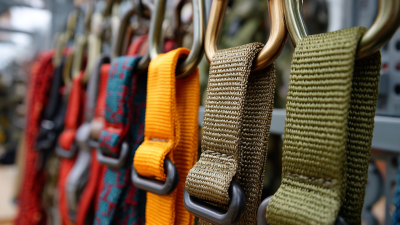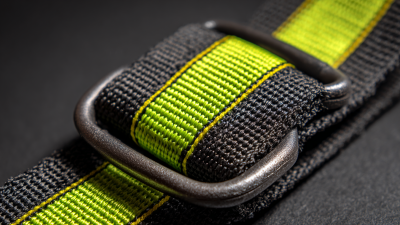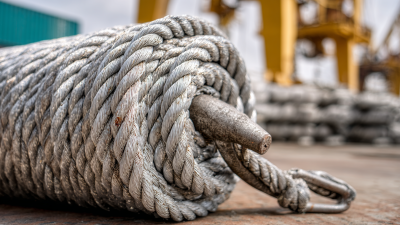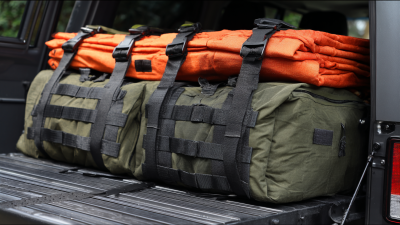When it comes to lifting heavy loads safely and efficiently, selecting the right equipment is crucial. One essential tool that consistently plays a pivotal role in lifting operations is the webbing sling. These versatile slings come in various types and specifications, suitable for a range of applications, but choosing the right one can significantly impact both safety and effectiveness. With an increasing variety of webbing slings available on the market, it is important to understand their characteristics, strengths, and suitable use cases.

To make an informed choice, one must consider several key factors, including the load capacity, lifting angle, material composition, and specific lifting circumstances. Each of these elements influences the performance and safety of the webbing sling during heavy lifting tasks. In this guide, we will explore the different types of webbing slings, their respective benefits, and best practices for selecting the most appropriate sling for your unique lifting needs. Whether you are working in construction, manufacturing, or any other industry requiring lifting solutions, a well-selected webbing sling can enhance productivity while ensuring the safety of both personnel and equipment.
When selecting the appropriate webbing sling for lifting applications, it is essential to understand the various types available and their specific uses. Nylon slings, known for their elasticity, are ideal for lifting loads that may require some stretch to absorb shock, making them suitable for uneven loads. However, they can be sensitive to heat and UV exposure, which may limit their application in certain environments.
On the other hand, polyester webbing slings offer superior resistance to moisture and UV degradation, making them a more durable choice for outdoor lifting tasks. Their minimal stretch characteristics also ensure more controlled lifting, which is crucial in precision situations. Additionally, there are specialty slings, such as those designed for specific shapes or heavy-duty applications, like heavy machinery lifting or fabricating loads with sharp edges, which may require protective sleeves or specific configurations. By understanding these differences, you can make more informed decisions that enhance safety and efficiency in your lifting operations.
When selecting the right webbing sling for your lifting needs, the choice of materials is crucial to ensure safety and efficiency. Webbing slings are commonly made from polyester, nylon, or a combination of both. Polyester slings are known for their excellent resistance to UV rays and chemicals, making them ideal for outdoor lifting applications. On the other hand, nylon slings offer superior elasticity and shock absorption, which can be beneficial in dynamic lifting situations. According to industry reports, slings made from high-quality materials can significantly increase load-bearing capacity and extend service life.
Tips: When choosing the material, consider the environment where the sling will be used. For instance, if you expect exposure to harsh chemical substances or extreme temperatures, polyester might be the safer option. Additionally, always check the working load limit (WLL) indicated on the sling, ensuring it meets or exceeds the weight of the load you'll be lifting.
Another factor to consider is the sling's finish and width. Wider slings distribute weight more evenly, reducing the risk of damage to the load and the sling itself. Industry standards recommend a width-to-thickness ratio that can help prevent cutting and abrasion, especially when lifting heavy or sharp-edged items. Always consult with a professional or refer to manufacturer guidelines to select a webbing sling that aligns with your specific lifting requirements.
When selecting a webbing sling for lifting applications, understanding weight capacities and safety ratings is crucial. Webbing slings are rated based on their load-bearing capacity, which is determined by the material used and the sling's construction. For instance, a high-quality polyester webbing sling typically has a lifting capacity ranging from 1,000 to 200,000 pounds, depending on its width and configuration. According to the Occupational Safety and Health Administration (OSHA), using a sling with the appropriate weight rating is critical to ensure safety during operations.
**Tips:** Always check the manufacturer's safety data sheets for specific weight capacities and ensure the sling selected exceeds the maximum expected load by at least 10%. Regularly inspect slings for wear and tear, as damages can significantly affect their rated capacity.
Additionally, safety ratings are essential to ensure compliance with industry standards. The American National Standards Institute (ANSI) provides guidelines that help identify the right slings for specific lifting tasks. Following these guidelines not only contributes to safety but also enhances operational efficiency. Remember, it’s not just about lifting; it’s about lifting safely and effectively.
**Tips:** Always use slings that comply with applicable industry standards and never exceed their rated capacities. Proper training for personnel on sling usage can further improve safety and performance during lifting operations.
| Sling Type | Weight Capacity ( lbs ) | Safety Factor | Best Use |
|---|---|---|---|
| Nylon Webbing Sling | 4,000 | 5:1 | General Lifting |
| Polyester Webbing Sling | 6,000 | 7:1 | Heavy Loads |
| Chain Sling | 8,800 | 4:1 | Rough Environments |
| Round Sling | 5,400 | 7:1 | Precise Lifts |
| Webbing Sling with Hooks | 3,200 | 6:1 | Versatile Lifting |
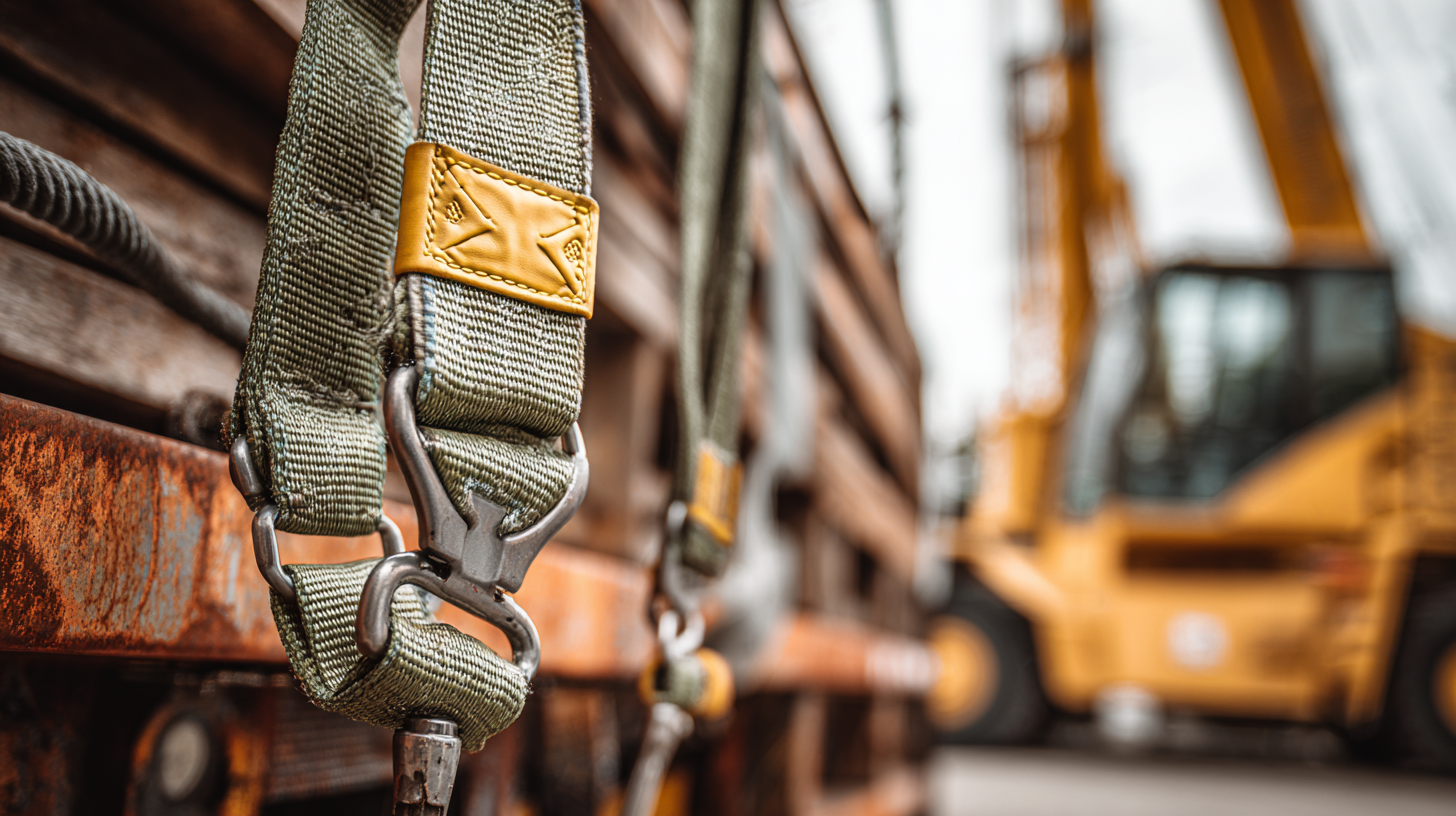 Selecting the appropriate length of a webbing sling is critical for ensuring safe and effective lifting operations. A study by the Occupational Safety and Health Administration (OSHA) indicates that sling length can significantly impact load balance and stability during lifts. Ideally, a sling should not be too long, as excessive length can lead to increased swing and potential load instability. Conversely, a sling that is too short may not accommodate the lift’s angle, leading to stress on the sling and possible failure.
Selecting the appropriate length of a webbing sling is critical for ensuring safe and effective lifting operations. A study by the Occupational Safety and Health Administration (OSHA) indicates that sling length can significantly impact load balance and stability during lifts. Ideally, a sling should not be too long, as excessive length can lead to increased swing and potential load instability. Conversely, a sling that is too short may not accommodate the lift’s angle, leading to stress on the sling and possible failure.
When determining the correct length, consider the lifting height and the angle at which the sling will be used. For example, a lifting angle of less than 30 degrees is generally discouraged, as it can overload the sling. Industry experts recommend that slings should be selected based on the maximum load they will carry, following the American Society of Mechanical Engineers (ASME) guidelines, which state that each sling should have a rated capacity that exceeds the total weight of the load by at least a safety factor of five. Proper measuring and selection can prevent risks of accidents, ensuring a smooth and secure lifting process.
 When it comes to ensuring the longevity of your webbing slings, proper maintenance is key. Regular inspections are essential; check slings for any signs of wear, fraying, or damage before every use. If you notice any irregularities, remove the sling from service immediately. This proactive approach helps prevent accidents and extends the life of your equipment.
When it comes to ensuring the longevity of your webbing slings, proper maintenance is key. Regular inspections are essential; check slings for any signs of wear, fraying, or damage before every use. If you notice any irregularities, remove the sling from service immediately. This proactive approach helps prevent accidents and extends the life of your equipment.
Additionally, ensure that webbing slings are cleaned regularly, especially after being used in harsh environments. Dirt, grease, and chemicals can weaken the fibers over time. Use mild soap and water to gently scrub the slings, and always allow them to dry completely before storage. When storing, keep slings in a cool and dry place, away from direct sunlight and extreme temperatures, to prevent UV damage.
Lastly, always follow the manufacturer's guidelines for weight limits and usage recommendations. Overloading can not only shorten the lifespan of the sling but also pose serious safety risks. Practicing these maintenance tips will help you get the most out of your webbing slings, ensuring they remain reliable and safe for your lifting needs.
